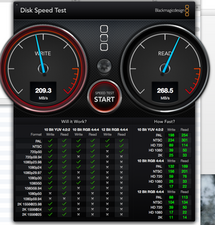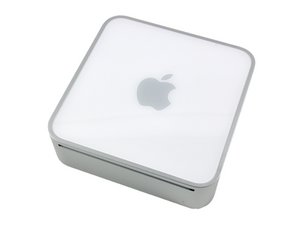Mac Mini only runs 1.5 gigabit on SSD
I changed my internal hard drive with a Samsung Evo 250GB.
This drive runs at 6 gigabit but I understand my Mac Mini runs SATA at 3 gigabit.
But when I installed the SSD it only runs at 1.5 gigabit. Is there some incompatibility with the Nvidia SATA driver?
Does anyone know which drives work and run 3 gigabit?

Update (09/10/2015)
Hi and lucky day! I returned the Samsung EVO 250GB and ordered a Crucial BX100 250GB from a local webshop. It said on their website that this drive is compatible for the 2009 Mac Mini. Of course all 6Gb drives "work" but the negotiating speed is the culprit.
When I installed the BX100 250GB I was disappointed because it also was set to 1.5Gb! I was on a chat with Crucial on their website and they suggested there must be something with "garbage collection" and to fix it I should take out the drive and let it stay connected to power only (no data connection) for at least 8 hours and the drive would fix itself. This sounded like a crazy solution but ok, I will try it. To my my amazement this really worked! Look at the enclosed pics. I get at least twice the speed I had on 1.5Gb. So my conclusion is that Crucial SSD drives work with the NVidia SATA controller in the 2009 Mac Mini. I guess this should work also with other Crucial SSDs.


So for my fix on this you would need an external power cable like an USB to SATA.
- UPDATE ***
I upgraded from Mac OS X 10.9 to 10.10. I then noticed the Crucial SSD again had gone back again to 1.5Gb. Tried different things like resetting pram, upgraded Trim Enabler etc. No luck. So I thought I should try again the suggestion with putting the drive on power-only for some hours. That again did the trick! Amazing (but weird) solution. I am now back where I want with 3Gb speed.
Update (08/31/2015)
I checked the Crucial compaibility search and it says the BX100 should work. Will report back. http://www.crucial.com/usa/en/compatible...
I also found this useful article on upgrading old Macs with SSD: http://blogs.helsinki.fi/tuylaant/2014/0...
Update (02/29/2016)
The Mini is back to 1.5Gb :-( I have tried every trick except opening the Mini and doing the "let alone with power and no data" trick. I don't have time for that right now. So that did not last for long. I hate this issue. Sorry.
Update (10/02/2016)
I came by this discussion that suggested using the Kingston UV400 SSD drives since they have a Marvell controller and do not conflict with the nVidia SATA controller. Would love to hear if anyone has tested this.
Bu iyi bir soru mu?


 40
40  37
37  6
6 

9 Yorum
What Nvidia SATA driver are you speaking about??
DanJ tarafından
How are you testing? Please describe your process.
DanJ tarafından
Sorry. I mean the Nvidia SATA controller. I attached an image. I have since searched for this issue and it seems that the Nvidia SATA controller does not negotiate well with all SSD drives so I have returned the Samsung EVO 250GB and ordered a Crucial BX100 250GB (http://www.crucial.com/usa/en/ct250bx100...) . From what I have read not all 6Gb/s drives understand to downgrade to 3Gb and then go down to 1.5Gb. I will report back the results.
asle tarafından
sorry @ asle for back on 1,5......did you update to el capitan?
i stay @ yosemite with trim enabled in osX. Had always 3,0 Gbit with "sandisk ssd 128" and now "sandisk ssd plus 240".
Thought, i´ve found out that the´ve nearly the same controller silicon motion 2246...EN for bx, XT for sandisk.
so i will stay away from crucial......
B 2 tarafından
It seems someone did the upgrade yes, not me. The BX should work I have read in this discussion. When I have time I will do the tricks laid out here, also the "power-only" cable and see if it works. Would be interesting to learn if Sandisk Plus behaves on Yosemite. Keep me updated (if you dare to try it!).
asle tarafından
4 tane daha yorum göster